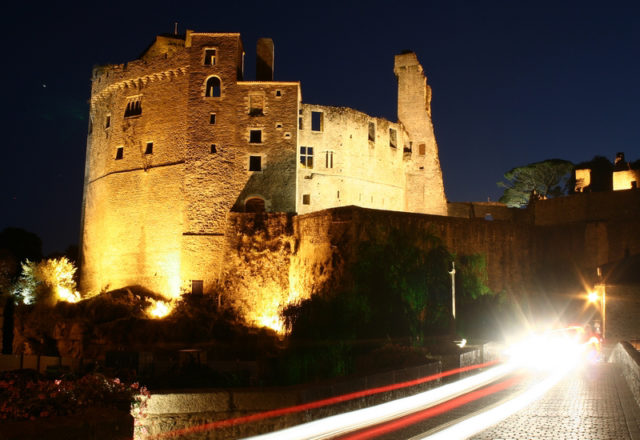Although most pirates were men, there are some notable historical examples demonstrating that women could be every bit as ferocious and bloodthirsty as their male counterparts. One such lady was Jeanne de Clisson, who set about single-headedly dismantling the French nobility after her husband was tricked into traveling to Paris and beheaded.
Jeanne-Louise de Belleville was born in 1300 to very wealthy Breton parents, Maurice IV of Belleville-Montaigu and Létice de Parthenay. As was normal in that time, she was married at age 12 to a nobleman, Geoffrey de Châteaubriant, and she bore him two children – Louise and Geoffrey. After Châteaubriant died in 1323, Jeanne-Louise married the great love of her life, Olivier III de Clisson. Five children came from this marriage – three sons, Maurice, Guillaume, and Olivier, and two daughters, Isabeau and Jeanne.

As was common at the time, wealthy noblemen were expected to assist in the defense of the realm – in this case Breton – either by donating money, men-at-arms, or both. The Breton crown was vacant; the French had put up their candidate Charles de Blois, whom de Clisson supported, and the English put up John de Montfort. This led to the Breton War of Succession, and in 1342, Oliver de Clisson was captured along with Hervé VII de Léon at Vannes. The English exchanged de Clisson for an Earl being held by the French, Ralph de Stafford, 1st Earl of Stafford, along with a suspiciously low ransom demand. This low ransom demand led to Charles de Blois insinuating that Oliver de Clisson was a possible traitor who did not fight to the best of his ability.
In January 1343, the Truce of Malestroit was signed, bringing the war to an end, and a tournament was planned to celebrate the end of the fighting. De Clisson, along with 15 other lords from Breton, were invited to the tournament, and all attended. At the tournament, de Clisson was arrested and sent to Paris for trial. Even though his guilt was not clearly demonstrated, he was beheaded on the 2nd of August, 1343 and his head placed on a pike.

On hearing of her husband’s death, Jeanne was infuriated and swore revenge on King Philip VI of France and on Charles de Blois. After she had taken her sons Olivier and Guillaume to see their father’s desecrated body, she started selling all the lands and other possessions that had belonged to her husband. Using the money raised, she purchased a fleet of ships that she painted black and equipped with red sails, creating the infamous “Black Fleet”.
Her war against the French king and his nobles began in 1343 when she began attacking French ships in the English Channel. She quickly gained the nickname “The Lioness of Brittany” as her fleet attacked every French ship she could find. She intentionally released one or two sailors from every ship so that the tales of her exploits would reach the ears of the king and de Blois. No French noblemen she found was treated as leniently; the story is told that she personally beheaded them with an ax before throwing their bodies into the sea. The death of King Philip VI in 1350 did nothing to stop Jeanne’s rampage across the English Channel.
At one stage, Jeanne’s flagship was sunk, and she with her two young sons were set adrift for five days. During this time Guillaume died of exposure, but Jeanne had rowed to safety and landed on English soil. Eventually, in 1356, Jeanne married an English lieutenant, Sir Walter Bentley, and her days as a pirate queen came to an end.

Towards the end of her life, she returned to live quietly in France at Hennebont Castle until her death in 1359.
The story of Jeanne de Clisson is one of a woman infuriated by an injustice; her bravery and determination to avenge her husband’s death can only be admired, even if her vengeance was harsh. A clear example that the female sex should never be underestimated!
